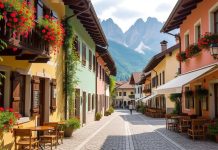Choosing the Right Rafting Trip for You
Understanding Your Experience Level
First-Timers
For those new to river rafting, it's important to choose a trip tailored to beginners. These trips often feature calmer waters and shorter durations to help newcomers acclimate to the flow and rhythm of rafting. Companies providing such trips usually include guides who specialize in teaching essentials, ensuring you feel safe and confident on the water.
Intermediate Level
If you have some rafting experience and are looking to challenge yourself a bit more, intermediate trips feature a blend of calm stretches interspersed with exhilarating rapids. These trips acquaint you with more technical aspects of the sport, offering opportunities to hone your skills in navigation and teamwork.
Advanced Adventurers
For seasoned rafters, advanced trips are marked by longer durations and more intense rapids, demanding a high level of physical fitness and expertise. Such expeditions often navigate Class IV and V rapids, pushing your rafting abilities to the limit and providing heart-pounding excitement.
Considering the Location and Conditions
The location of your rafting trip significantly affects the overall experience. Research various rivers to find one that meets your expectations for scenery and challenge level. Some rivers are famous for their stunning surroundings, while others are renowned for thrilling rapids.
Season and Weather
The time of year can heavily influence river conditions. Springtime often offers high water levels due to snow melt, increasing the velocity and intensity of rapids. Meanwhile, summer might present lower water levels, creating rockier paths. Understanding these seasonal changes can help in selecting a suitable trip.
Packing Essentials for a River Rafting Expedition
Choosing the Right Gear
Clothing
Wear layers that are easy to adjust as weather conditions change throughout the day. Opt for moisture-wicking, quick-dry fabrics to enhance comfort. Include thermal wear if rafting during cooler months or higher elevations. Do not forget a reliable, waterproof jacket to protect against unexpected rain.
Footwear
Secure, closed-toed water shoes with non-slip soles are essential. They protect your feet from sharp objects and provide enough traction for walking on wet rocks and muddy trails during stopovers.
Safety Equipment
Most guided trips include safety gear, but it’s essential to inquire and confirm what is provided. Wear personal flotation devices (PFDs) at all times on the river. A helmet might also be necessary, especially for more challenging rapids.
Camping and Comfort Supplies
Sleeping Gear
Consider a compact, comfortable sleeping bag suitable for the anticipated night temperatures. A lightweight, inflatable sleeping mat ensures a good night’s rest after a day on the water.
Cookware and Food Supplies
Multi-day trips may require you to prepare your own meals. Camping cookware sets, compact stoves, and portable coolers can be indispensable. Plan meals with non-perishable ingredients and high-energy snacks to keep you fueled throughout the journey.
Personal Items
Don't forget personal hygiene items such as biodegradable toiletries and quick-dry towels. Bring sunscreen, lip balm with SPF, and insect repellent to protect against the elements and insects. Consider a waterproof camera or phone pouch for documenting your adventure without risking damage.
Understanding the Essentials of River Safety
Pre-Trip Orientation
Most organized trips offer comprehensive safety orientations. Participate actively and take notes during these sessions. Size your PFD properly and familiarize yourself with safety signals and protocol.
On the Water
Teamwork and Communication
Effective communication among team members is critical for navigating rapids safely. Follow your guide’s instructions and maintain eye contact with fellow rafters to ensure smooth coordination.
Handling Emergencies
Understand basic river rescue techniques such as throw bag use and swimming techniques for recovering from capsizes. Never hesitate to call out for help or offer assistance to ensure every rafter’s safety on the water.
Physical and Mental Preparation
Building Endurance
A multi-day rafting trip can be physically demanding. Engage in regular cardiovascular exercises like running, swimming, or cycling to build stamina and prepare your body for extended days of paddling.
Strength Training
Incorporate exercises targeting your core, arms, and upper body into your fitness routine. Activities like push-ups, rowing, and resistance-band workouts foster the muscle groups crucial for sustained paddling efforts on the river.
Mental Readiness
Prepare mentally by understanding the duration and challenges of your chosen trip. Meditation or visualization techniques can promote calmness and focus, equipping you to handle unexpected situations and maintain a positive state throughout your adventure.
Learning River Ecology and Conservation
Understanding River Ecosystems
Awareness of the ecosystem not only enriches your experience but also fosters a respect for nature. Learn about the flora and fauna native to the river you'll be traversing. Being informed enhances appreciation and deepens your connection to the environment.
Practicing Leave No Trace
Leave No Trace principles apply to all outdoor activities. Practice good eco-stewardship by minimizing waste, respecting wildlife, and leaving campsites and riverbanks as pristine as you found them.
Waste Management
Carry out all trash, utilize biodegradable soaps, and properly dispose of waste. Consider how you can minimize your environmental impact without sacrificing convenience and comfort.
Supporting Conservation Efforts
Many organizations work to protect rivers and surrounding environments. Consider supporting these initiatives, whether through donations or volunteering, to help preserve these natural treasures for future generations.
Establishing Routine and Daily Travel Tips
Morning Routines
Each morning, check weather conditions and water levels. Adjust your clothing and equipment accordingly. Ensure a hearty breakfast for sustainable energy, and review river maps to orient yourself with the day's course.
Daily Paddling Techniques
Rotate through different paddling positions to conserve energy and distribute workload among your team evenly. Master diversified stroke techniques, such as J-strokes or draws, for better control and navigation.
Evening Rest and Reflection
After setting up camp, take time for relaxation and reflection. Chat with fellow rafters about the day’s highlights, enjoy a meal together, and prepare gear for the next day's journey. Recharge fully with enough sleep to tackle the adventure awaiting at sunrise.
By integrating these elements into your preparation, you're well on your way to ensuring a safe, enjoyable, and memorable multi-day river rafting trip.




























